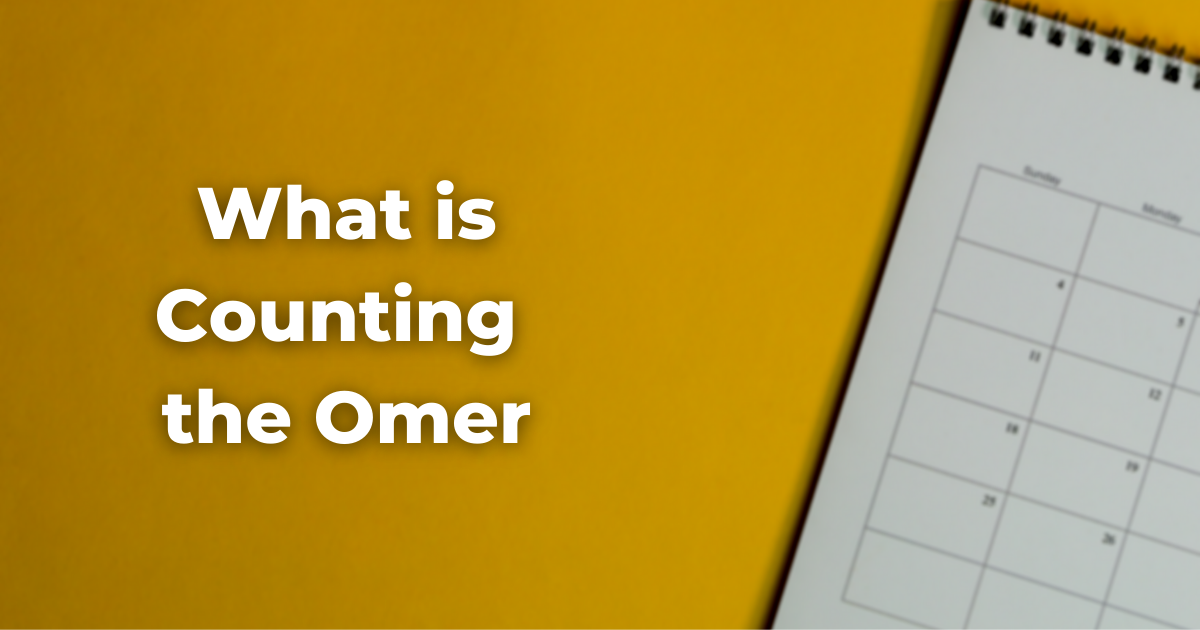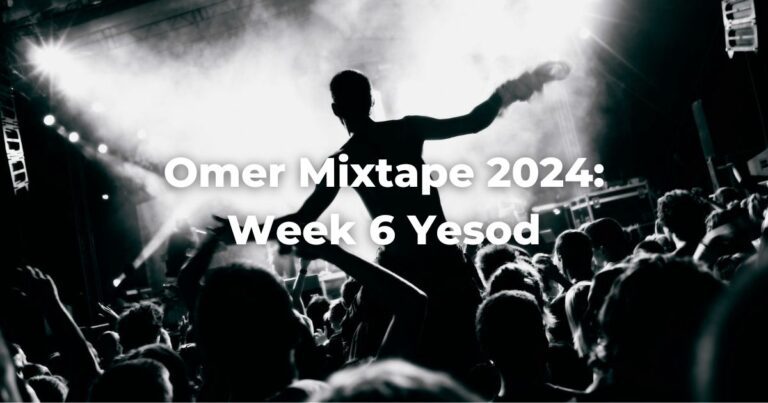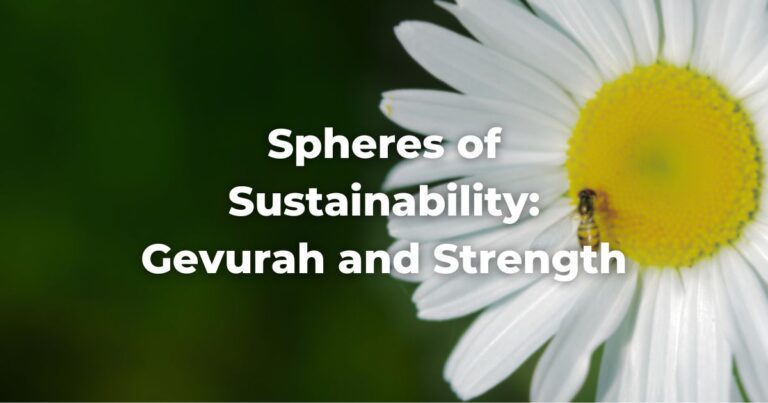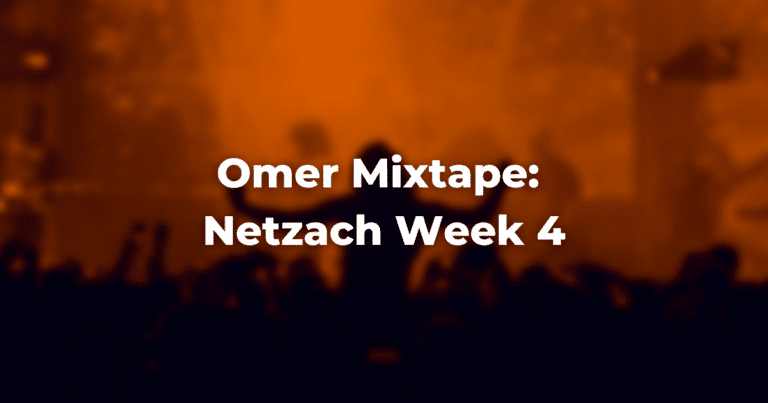Counting the omer highlights the agricultural dimension of the festivals of Passover and Shavuot. In ancient times, a measure of the first barley to be harvested (called an omer) was brought to the Temple as an offering of thanksgiving and gratitude.
This is actually a mitzvah of the TorahRefers to the first five books of the Hebrew Bible, the Tanakh, also called the Five Books of Moses, Pentateuch or the Hebrew equivalent, Humash. This is also called the Written Torah. The term may also refer to teachings that expound on Jewish tradition. Read more, as codified at Leviticus 23:10: “When you enter the Land that I am giving to you and you reap its harvest, you shall bring the first sheaf (omer) of your harvest to the priest.”
This is only the first part of the requirement, however, and Scripture specifically goes on in that same chapter to require that the faithful count off fifty days and then, on the fiftieth day, offer a different set of sacrifices to God on the festival of Shavuot (Leviticus 23:15–16 and Deuteronomy 16:9–10, and cf. the elaboration of these verses by Maimonides in the Mishneh Torah in the seventh chapter of Hilkhot T’midin U-musafin).
This forty-nine-day period is called colloquially the s’firah (sefirah ), “the counting.”
Every evening, starting with the second night of Passover, we count the omer just before the Aleinu hymn. Some introduce the actual act of counting the day aloud with a meditative opening prayer, but this prayer is optional.
The blessing before counting the omer is barukh attah adonai, eloheinu, melekh ha-olam, asher kidd’shanu b’mitzvotav v’tzivvanu al s’firat ha-omer (“Praised are You, Adonai, our God, Sovereign of the universe, who, sanctifying us with divine commandments, has commanded us regarding the counting of the omer”).
Then, each evening for forty-nine days, the counting itself ensues. The counting should take place after the Evening Service is recited. The omer may not be counted before nightfall. Therefore, if the Evening Service in the synagogue is being held before sundown, the last day that was counted is announced to indicate the correct number to be counted later that evening. It is required not only to count the days, but also to note how many full weeks and how many extra days of the omer have passed as well (SA Orach Chayyim 489:1).
If one forgets to count one night of the omer, one may do so all night long and one may say the blessing as well. If the entire night is missed, one can count during the day, but without the blessing. One may then resume the counting with a blessing the next night.
If an entire night and day is missed, one is obliged to count the remaining nights of the omer anyway, but one may no longer say the blessing, since the possibility of performing the entire mitzvah no longer exists (SA Orach Chayyim 489:8). (Click here to see Rabbi Bradley Artson and Rabbi Aaron Alexander’s teshuvah that permits recitation with a blessing.)
In an agricultural society, where existence was wholly dependent on the produce of the land, an expression of gratitude for the fecundity of the soil needed little further explanation. As with other such gifts required by biblical law, counting the days of the omer was intended to express humility and to give voice to one’s understanding that prosperity on the land is inevitably a combination of human effort and divine blessing.
Since the destruction of the Temple, the custom of counting the omer mostly serves to draw a direct line between Passover and Shavuot, a line that can be taken to connect the concept of growth from mere freedom from slavery to the point at which one understands that ultimate freedom comes to human beings through obedience to divine law.
Traditionally, the s’firah period is a time of semi-mourning.
The TalmudReferring to one of two collections, the Jerusalem and Babylonian Talmuds, edited in the 6th century, that contains hundreds of years of commentary, discussion, and exploration of the ideas in the Mishnah. One could describe it as Mishnah + Gemara = Talmud Read more describes a tragedy that occurred in the time of Rabbi Akiva, when thousands of his students died in this period between Passover and Shavuot (Yevamot 62b). The exact circumstances of this tragedy are unclear, but the Talmud looks inward and blames the debacle on the lack of respect that these students showed toward one another.
Scholars also note that this was the period of the Hadrianic persecutions in the beginning of the second century C.E. and that Rabbi Akiva was one of the principal players in the Bar Kokhba revolt just a short time after that.
Regardless of the ultimate cause, however, the impact of the tragedy was undeniable. Over the generations, other sorrows and tragedies were added to the list of disasters that befell the Jewish people during this particular period, and it became a kind of magnet in time for sadness and grief. As a result, even in modern times, we pass through these weeks in a spirit of semi-mourning (SA Orach Chayyim 493:1–4).
There are actually many different patterns of observance that prevail during all or part of the s’firah period, all suggestive of mourning rituals. For example, some men do not shave during the s’firah, even in otherwise licit ways. And it is also customary not to cut one’s hair.
Traditionally, weddings were not scheduled during the s’firah period. The Committee on Jewish Law and Standards has ruled, however, that although weddings and other festive parties should not be held from Passover through Yom Ha-sho·ah (Holocaust Memorial Day, which falls on the twenty-seventh day of Nisan), the days of s’firah from then on may be treated as any other time of the year with respect to parties and weddings (Klein, p. 143).
Some are more stringent, however, maintaining the ban on parties until Lag Ba-omer (the eighteenth day of Iyyar, the thirty-third day of the omer) and then permitting them after that date (Klein, p. 144). Still others avoid celebrations during this entire period with the exception of Lag Ba-omer, Yom Ha-atzmaut (Israel Independence Day), and Rosh Hodesh. Individuals anxious to plan weddings or parties during s’firah should consult the rabbi of their community to determine what custom prevails.
Adapted with permission from The Observant Life.
Authors
-

-

The Observant Life: The Wisdom of Conservative Judaism for Contemporary Jews distills a century of thoughtful inquiry into the most profound of all Jewish questions: how to suffuse life with timeless values, how to remain loyal to the covenant that binds the Jewish people and the God of Israel, and how to embrace the law while retaining an abiding sense of fidelity to one’s own moral path in life. Written in a multiplicity of voices inspired by a common vision, the authors of The Observant Life explain what it means in the ultimate sense to live a Jewish life, and to live it honestly, morally, and purposefully. The work is a comprehensive guide to life in the 21st Century. Chapters on Jewish rituals including prayer, holiday, life cycle events and Jewish ethics such as citizenship, slander, taxes, wills, the courts, the work place and so much more.
View all posts






